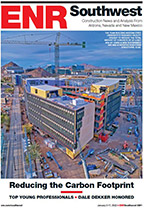At about the same time, CalArts decided to shut down its design department. Selkowitz taught a swan-song course called "Living Lightly: Preliminary Design for a Self-Sufficient Five-Family Community Using Appropriate Technology."
Rosenfeld offered Selkowitz a job in 1976. When the young scientist joined the lab, there were few research scientists without a PhD in theoretical physics. Selkowitz became "the architect."
In 1985, Selkowitz formed the building technologies department, which he grew to 80 researchers. In 2011, as part of a succession plan, the lab reorganized.Selkowitz handed the department-head baton to Mary Ann Piette, a former deputy. He still leads the 13- member windows-and-envelope materials group, which studies color-changing dynamic windows and related daylighting technologies.
Selkowitz concedes he has been a catalyst for change in the lab and the marketplace, but he credits the lab scientists on his teams for doing the "real work" to advance technologies and create tools.
Brandon Tinianov, senior director for business development at View Inc., a maker of dynamic glass, agrees, saying he knows of no other national lab that has had such an impact on the marketplace. "You cannot buy software that improves upon the tools that the lab provides for free and updates annually," says Tinianov.
Last year, there were 40,000 downloads of the "freeware." There are nearly 40,000 lifetime users of THERM, which calculates heat transfer through window frames, and more than 20,000 of WINDOW, which allows users to model complex glazing systems.
FLEXLAB’s Lineage
FLEXLAB has two "ancestors." In the mid-1980s, Selkowitz outfitted a mobile window thermal test facility, dubbed MoWiTT. The two-chamber facility, built on a trailer chassis so it could be rotated and relocated, spent more than 15 years collecting data near Reno, Nev., where summers are hot and winters are cold, before resettling at the Berkeley lab.
In Reno, "we proved low-E coatings really worked," says Selkowitz, who is credited with catalyzing the market adoption of low-E windows through his involvement with the formation, in 1989, of the National Fenestration Rating Council.
The group developed a methodology to rate and certify the properties of any window, based on the Berkeley lab's freeware—developed using MoWiTT findings—and the lab's international glass database.












Post a comment to this article
Report Abusive Comment